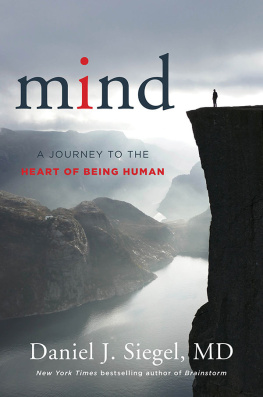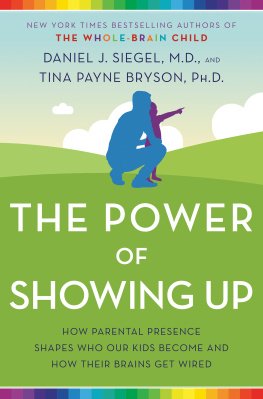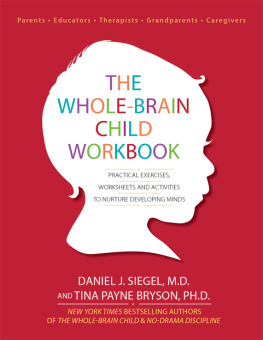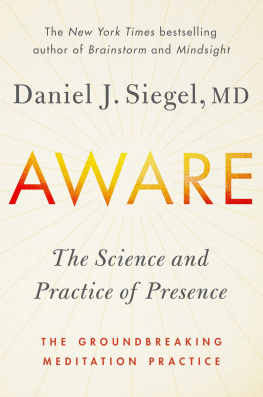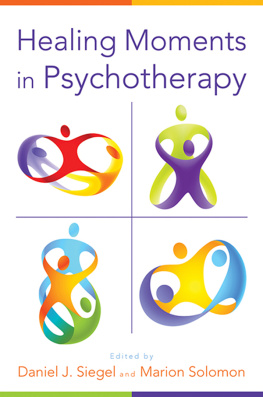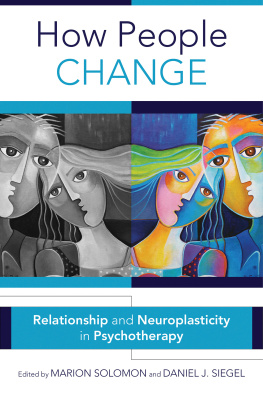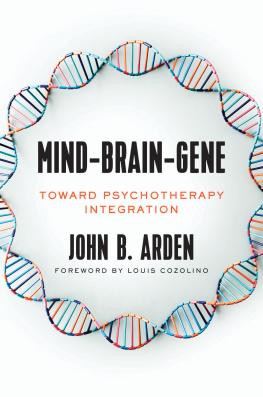Daniel J. Siegel
Overview: Interpersonal Neurobiology
The field of mental health is in a tremendously exciting period. Recent findings from cognitive neuroscience have revealed some new insights into how mental processes emerge from the activity of the brain. Independent advances in the science of development, especially longitudinal studies in the field of attachment, shed new light on how early experiences influence such fundamental processes as memory, emotion, and the regulation of behavior. The often isolated fields of neurobiology and attachment have a fascinating set of convergent findings relevant to the understanding of trauma. Examination of these and other areas of research can offer us new ways of understanding how the developing mind is shaped by the interaction of interpersonal experience and neurobiological processes in the creation of the human mind. This approach has been described as interpersonal neurobiology in earlier writings (Siegel, 1999, 2001a) and will serve as the conceptual foundation for this chapter.
By drawing on a wide array of independent branches of science from neurobiology to attachment, we can deepen our understanding of human experience and the art of psychotherapy. An extensive interdisciplinary approach can draw on findings from a wide range of isolated academic disciplines to find the convergence of perspectives. Such a consilience (Wilson, 1998) or unity of knowledge helps us to remain grounded in the objective empirical findings of science as we focus on the equally real aspect of the subjective mental lives of our patient/clients. Such a broadened view can enable practitioners to gain new insights into their own work and also to propose some new possibilities that expand their therapeutic potentials and point to new directions for the future. Our efforts to enhance and understand mental health can be greatly nurtured by a scientifically grounded interdisciplinary focus on the mind, the brain, and human relationships.
As relationships are created by the communication patterns between people, one can envision that psychotherapy allows two minds to join each other as they share in the flow of energy and information between them. This joining process may feel exhilarating, but how does it promote change and healing? How do we incorporate the ideas about relationships and development into our modern understanding of brain and mind? How can we move as psychotherapists between the intersubjective nature of interpersonal communication and the ways in which mental processes emerge from patterns of neural firing? Let us take this seeming conceptual leap and build a practical bridge that is founded in science and can deeply inform our understanding of subjective life and human development across the lifespan. Here are some ideas that serve as building blocks.
The location of firing within the brain determines the nature of the emerging mental process. The particular activation determines the nature of the representation. For example, visualizing the Eiffel Tower in your mind may involve activation of areas of the occipital cortex, in the back of the brain. Visualizing the Grand Canyon may involve similar areas, but a distinct neural net profile of activation. What we dont yet know is exactly how neural firing patterns create the subjective experience of mental processes and representations. The brain functions as an associational organ, making functional links among various representations and processes. In this manner, when recalling the Eiffel Tower, you may first see the tower in your minds eye, then sense the smell of baguettes, feel a romantic urge, and then recall actually being there with your lover. These can all be triggered by the linguistic representation of Eiffel Tower with the subsequent cascade of multirepresentational associational linkages. This is the foundation for memory and imagination.
New neural connections in response to experience can be made across the lifespan. As new synapses are formed in response to experience, we create the foundation for memory. In this way experience, memory, and development are overlapping processes. Recent findings from neuroscience also suggest that new neurons growing in integrating regions of the brain may also continue to emerge across the lifespan. How experience, especially that of psychotherapy, may continue to create new neural connections and perhaps initiate the growth of new integrative neurons is yet to be determined. We will be focusing on the process of neural integration as the fundamental manner in which the brain creates functional linkages by making neural connections across disparate regions. These pathways of neural integration are the same pathways that help with self-regulation. As well see, when we think about how to help a traumatized individual to heal, we may be focusing directly on how the therapeutic interpersonal experience enables integrative fibers to actually grow and thus enable new abilities to be attained. We will have to await the empirical research to prove it, but this is the central hypothesis for the view described in this chapter.
We will examine how traumatic experiences influence the development of the brain and the mind and how these experiences and the adaptations to them can create clinical difficulties. Then, we will offer an approach to psychotherapy that is based on an interpersonal neurobiological understanding of development, mental health, and the power of relationships to nurture and to heal the mind.
Mental Health and Complex Systems
The human mind is a complex system. In order to deepen our understanding of the minds response to trauma and how the healing process can occur, it is helpful to examine the nature of complexity and its potential relationships to mental well-being.
The nonlinear dynamics of complex systems, revealed in the mathematically derived probability perspective of chaos theory or complexity theory, can help us to understand how systems capable of chaotic behavior organize themselves over time. The application of complexity theory to mental processes is an exciting adventure into consilience and a deepening of our ability to understand such processes as self-regulation, states of mind, and interpersonal relationships. Complexity theory offers several conceptual foundations that can serve as guide posts to creating a working definition of mental health (Siegel, 1999, 2001a).
A complex system is defined as one that is open, multilayered, and capable of chaotic behavior. The behavior of the component parts of a complex system can be described by assessing their emergent states as they change across time. These states involve the activation or position of the component parts (water molecule position in clouds, neuronal activation profiles for brains, and the flow of energy and information for minds). The nonlinear dynamics of complex Systems describe the ways in which small changes in initial input to the system can lead to large and unpredictable outputs. A dynamic (complex) system can thus be observed and its short-term states anticipated, but in the long run the emergence of overall states cannot be exactly predicted. The human mind, and indeed pairs of minds and communities of minds, meet these criteria for complex systems (Cicchetti & Rogosch 1987; Fogel et al., 1998; Boldrini et al., 1998).
Here are some salient principles of complexity theory that are relevant to psychotherapy and mental health:
1. Complex systems have a self-organizational process that emerges out of the nature of the properties of their component parts,
2. The flow of states of the system has recursive features, both internal and external, that reinforce the flow in a particular direction;
3. Both internal and external constraints


